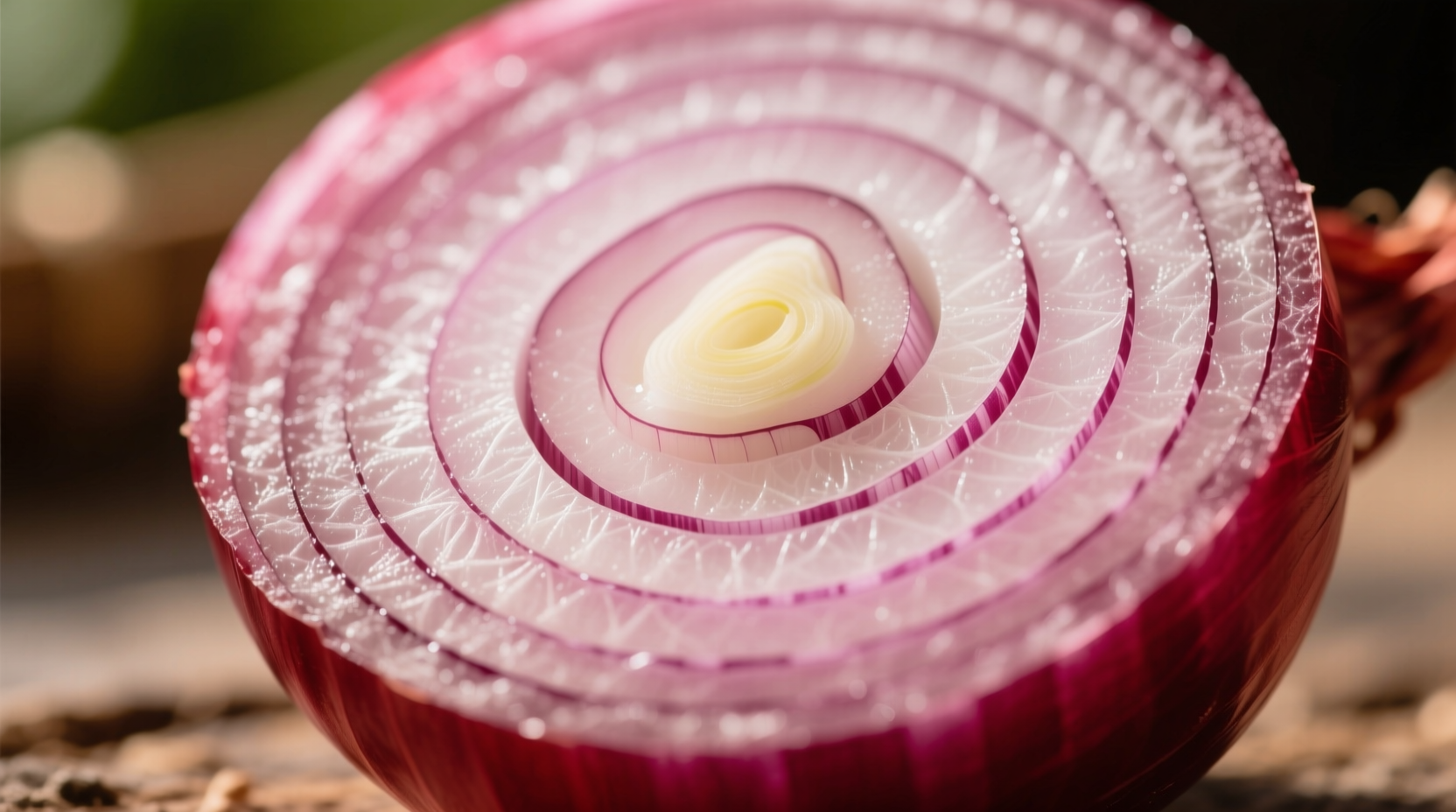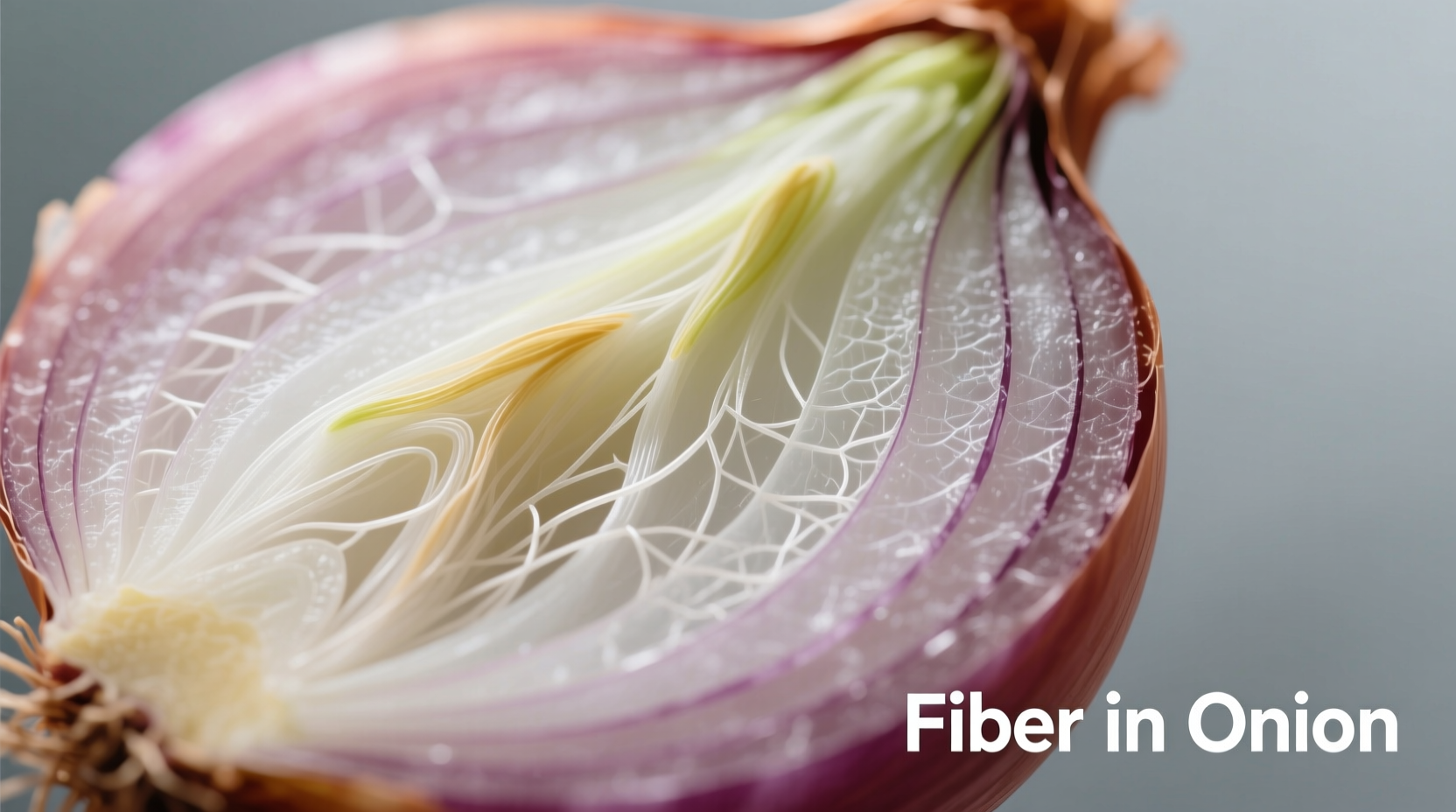One medium onion (110g) contains approximately 2.7 grams of dietary fiber, with both soluble and insoluble types that support digestive health, blood sugar regulation, and heart health. Raw onions provide slightly more fiber than cooked ones, and red onions typically contain more fiber than yellow or white varieties.
Why Onion Fiber Matters for Your Daily Nutrition
When you're building a high-fiber diet, onions deserve a prominent place in your meal planning. These versatile vegetables aren't just flavor enhancers—they're nutritional powerhouses that deliver significant fiber benefits with minimal calories. Understanding exactly how much fiber onions provide and how to maximize these benefits can transform your approach to healthy eating.
Breaking Down Onion Fiber Content
According to USDA FoodData Central, the precise fiber content varies by onion type and preparation method. This detailed breakdown helps you make informed choices:
| Onion Type | Per 100g Raw | Medium Onion (110g) | Fiber Type Composition |
|---|---|---|---|
| Red Onion | 2.6g | 2.9g | 60% insoluble, 40% soluble |
| Yellow Onion | 2.4g | 2.6g | 65% insoluble, 35% soluble |
| White Onion | 2.1g | 2.3g | 70% insoluble, 30% soluble |
| Cooked Onion | 1.9g | 2.1g | Slight reduction in soluble fiber |
This comparison reveals that red onions provide the highest fiber content among common varieties. The cooking process slightly reduces total fiber, particularly affecting the soluble fiber component which dissolves in water during preparation.
Health Benefits of Onion Fiber: Beyond Digestion
Onion fiber delivers multiple health advantages that extend far beyond basic digestive support. The unique combination of soluble and insoluble fiber creates synergistic effects:
- Prebiotic effects: Onions contain inulin and fructooligosaccharides (FOS), which feed beneficial gut bacteria according to research published in the Journal of Nutrition
- Blood sugar management: Soluble fiber slows glucose absorption, helping maintain stable blood sugar levels
- Heart health support: Fiber binds to cholesterol particles, facilitating their elimination from the body
- Weight management: High fiber content increases satiety, reducing overall calorie intake

How Onion Fiber Compares to Other Common Sources
While onions aren't the highest fiber food available, they offer a practical advantage: you can consume them regularly in significant quantities without dramatically changing your eating habits. Consider these comparisons:
- One medium onion (2.7g fiber) provides about 10% of your daily fiber needs
- One medium apple (4.4g fiber) offers more total fiber but lacks the culinary versatility of onions
- 1/2 cup cooked lentils (7.8g fiber) contains more fiber but requires dedicated meal planning
The real value of onion fiber comes from its seamless integration into daily meals. Unlike dedicated high-fiber foods that might require dietary adjustments, onions naturally enhance existing recipes while contributing meaningful fiber.
Maximizing Fiber Retention in Your Cooking
Your preparation methods significantly impact how much fiber you actually consume from onions. Follow these evidence-based techniques to preserve maximum fiber content:
- Eat raw when possible: Raw onions retain 10-15% more fiber than cooked versions
- Minimize cooking time: Quick sautéing preserves more fiber than prolonged simmering
- Use the whole onion: The outer layers contain higher fiber concentrations—avoid excessive peeling
- Pair with other fiber sources: Combine onions with beans, whole grains, or vegetables for fiber synergy
Research from the National Center for Biotechnology Information confirms that minimal processing preserves the prebiotic compounds in onions that support gut health. The study found that raw onions maintained 92% of their original prebiotic content, while boiled onions retained only 78%.
Practical Ways to Boost Your Fiber Intake with Onions
Instead of viewing onions as mere flavoring agents, treat them as nutritional components in their own right. These practical strategies help you harness their fiber benefits:
- Add raw red onion slices to salads and sandwiches for maximum fiber retention
- Incorporate onions into morning omelets or frittatas for an early fiber boost
- Create onion-based salsas using raw ingredients to preserve fiber content
- Use onions as a base for soups and stews—while some fiber is lost, the volume consumed compensates
- Try caramelized onions as a topping for proteins instead of sugary sauces
Addressing Common Misconceptions About Onion Fiber
Several myths persist about onion nutrition that deserve clarification:
- Myth: Cooking destroys all fiber benefits in onions
Reality: While some soluble fiber is reduced, significant amounts remain, and cooking makes certain antioxidants more bioavailable - Myth: Only the outer layers contain fiber
Reality: Fiber is distributed throughout the onion, though concentrations are slightly higher near the skin - Myth: Onion fiber causes excessive gas for everyone
Reality: While onions contain FODMAPs that affect some people, most individuals tolerate moderate amounts well, especially when introduced gradually
According to a CDC report on dietary fiber intake, over 90% of Americans don't meet daily fiber recommendations. Incorporating fiber-rich foods like onions into regular meals represents a practical strategy for closing this nutritional gap without drastic dietary changes.
Creating Balanced Fiber-Rich Meals with Onions
The most effective approach to increasing fiber intake involves strategic meal planning. Onions work particularly well in these high-fiber combinations:
- Mediterranean bowl: Base of quinoa (5g fiber) with roasted vegetables, chickpeas (6g), and raw red onion (2.9g)
- Fiber-forward stir-fry: Mixed vegetables, tofu, brown rice (3.5g), with generous yellow onion (2.6g)
- High-fiber soup: Lentil soup with double the usual onion quantity for added fiber boost
These combinations demonstrate how onions contribute meaningfully to your daily fiber goals while enhancing flavor and nutritional diversity.











 浙公网安备
33010002000092号
浙公网安备
33010002000092号 浙B2-20120091-4
浙B2-20120091-4